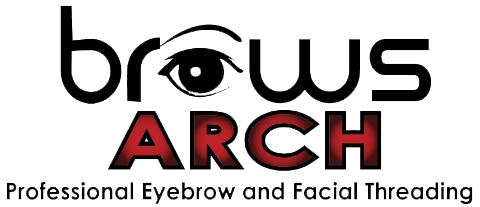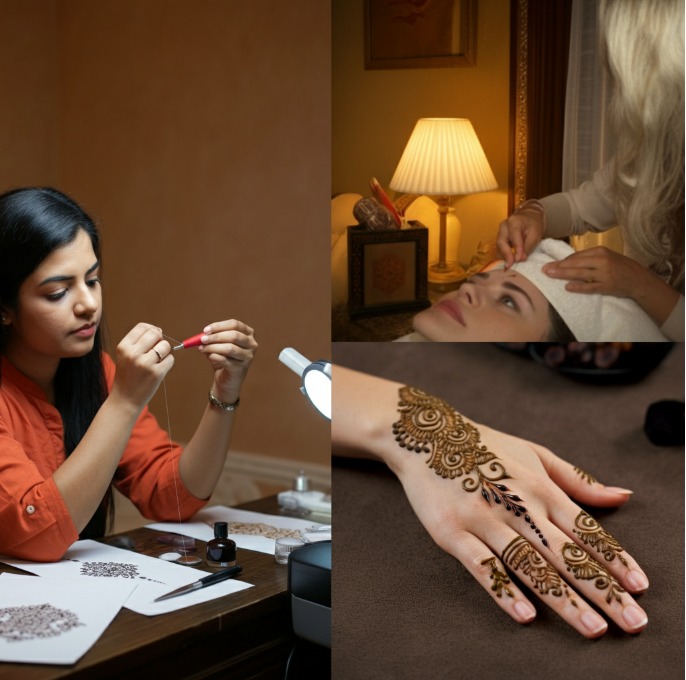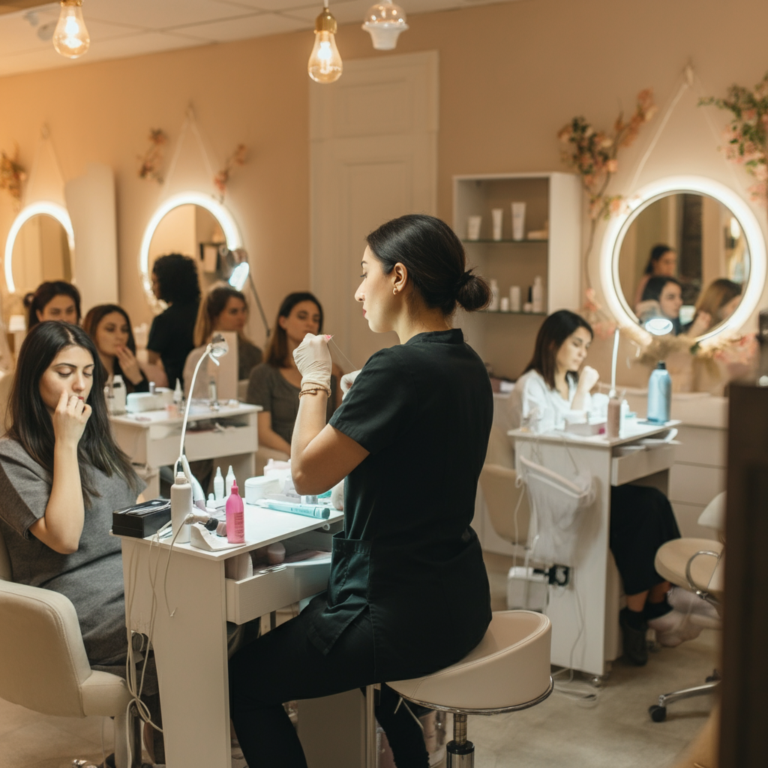Facial hair removal is a key part of many beauty and grooming routines, and one technique stands out for its precision and gentle approach: threading. Rooted in ancient traditions, threading has grown in popularity worldwide as a go-to solution for shaping eyebrows and removing facial hair. But what makes threading so special, and is it the right choice for your skin and beauty needs?
This blog explores everything you need to know about threading, how it compares to other hair removal techniques, and the best practices to keep your skin healthy and glowing. Whether you’re new to threading or want to learn some expert tips, this guide has you covered.
What is Threading?
Threading is a method of hair removal that involves twisting a thin thread, typically made of cotton, to pluck out hair from the root. This ancient technique has origins in South Asia and the Middle East, where it’s been used for centuries as a gentle yet effective way to shape eyebrows and remove unwanted facial hair.
The beauty of threading lies in its precision. With skilled maneuvering, the thread can target even the finest hairs, making it ideal for delicate facial areas like the eyebrows and upper lip. Unlike waxing or shaving, threading doesn’t tug at or scrape the skin, making it an increasingly popular choice for those with sensitive skin or specific shaping needs.
Why is Threading Popular?
Here’s why threading has earned loyal fans around the globe:
- Exceptional Precision: Perfect for shaping eyebrows and targeting fine, hard-to-see hairs.
- Chemical-Free: No wax or harsh products involved, just a simple cotton thread.
- Gentle on Skin: Ideal for sensitive skin (more about this below!).
- Lasting Results: Removes hair from the root, which means slower regrowth (usually around 4-6 weeks).
If you’ve never tried threading but are intrigued, don’t worry. We’ll cover all the basics and more in this guide.
Facial Threading vs. Waxing: Which One is Right for You?
Threading and waxing are two of the most common choices for facial hair removal, but they come with key differences:
1. Precision and Control
Threading is performed by twisting the thread into small sections, removing flyaway or fine hairs with incredible precision. Waxing, on the other hand, targets larger areas at a time, making it less precise when shaping defined areas like eyebrows.
Best for: Sharp eyebrow arches? Choose threading. Eyebrows and large sections of facial hair? Waxing may be quicker.
2. Skin Sensitivity
Threading is notoriously gentle because it doesn’t pull on the skin the way waxing does. People with sensitive skin often prefer threading to avoid post-wax redness or irritation.
Best for: Sensitive or acne-prone skin? Threading is your friend.
3. Pain Factor
Both methods involve pulling hair from the root, but threading tends to be less painful because it’s localized to smaller areas. Of course, everyone’s pain tolerance varies.
4. Cost
Threading is generally less expensive than waxing. Plus, it doesn’t require additional products like waxes or specialized strips.
Each method has its benefits, so it really depends on your skin type, budget, and how precise you want the results to be.
How Threading Works Without Damaging Skin
Wondering how threading gently removes hair while minimizing impact on your skin? It all comes down to technique.
The threading process involves a skilled professional twisting a thread into a loop and rolling it over the skin to trap hair at the root. The hair is then quickly pulled out in the direction of growth, which reduces the chance of ingrown hairs (a common issue with waxing or shaving).
Because threading doesn’t involve applying heat or chemicals, it doesn’t stretch or irritate the skin. While there might be minor redness right after a threading session, it typically fades within an hour. This makes it a safer option for those prone to breakouts or allergies.
Pro Tip: If threading feels uncomfortable, it’s likely due to your first session or a less experienced practitioner. A skilled threading expert can make all the difference in how your skin feels afterward.
Threading at Home vs. Salon: The Pros and Cons
Threading has become so popular that many people are wondering if it’s worth trying the technique at home. Here’s a quick breakdown of the pros and cons for both options.
At Home
Pros
- Cost-effective
- Convenient (no appointments necessary!)
- Good for touch-ups between salon visits
Cons
- Steeper learning curve
- Harder to achieve precision (especially for eyebrows!)
- Higher chance of skin irritation if done improperly
At a Salon
Pros
- Expert precision, especially for shaping beautiful eyebrows
- Faster process with experienced hands
- Less risk of mistakes or skin damage
Cons
- Can be pricier over time
- Requires scheduling trips to the salon
If you’re a beginner, it’s always a good idea to try threading at a salon first to understand the process. Once you’re comfortable, you can experiment with touch-ups or simple areas at home.
Best Aftercare Tips Post-Facial Threading
Threading is gentle, but it’s still important to care for your skin afterward to prevent any irritation or dryness. Here’s how to keep your freshly threaded skin healthy and glowing:
- Soothe the Skin: Apply an aloe vera gel or cold compress to reduce redness and calm your skin.
- Avoid Makeup: Hold off on applying makeup for at least 24 hours to prevent clogged pores or sensitivity.
- Hydrate and Moisturize: Keep your skin moisturized with a lightweight, non-comedogenic cream.
- Protect from Sun: Apply sunscreen generously if you’ll be outdoors to avoid irritation or discoloration on treated areas.
- Avoid Harsh Treatments: Delay exfoliation or chemical peels for at least a week after threading.
By following these tips, you’ll extend the smooth, flawless results of your threading session.
Is Threading Safe for Sensitive Skin?
If you have sensitive skin, you’re probably wary about trying certain beauty treatments—but the good news is threading is often a safe choice. Here’s why:
- No Harsh Ingredients: Unlike waxing, threading uses no chemicals or synthetic products.
- Minimized Irritation: Less pulling and tugging on the skin means reduced redness and discomfort.
To ensure maximum safety, choose a trained threader who works with a gentle, steady hand and uses clean tools. For extra precaution, do a small patch test before threading areas like your face.
Tip: If you’re unsure about your skin’s response, consult a dermatologist before your first session.
Your Next Step to Flawless Brows and Radiant Skin
Threading eyebrows and facial hair is a highly effective, skin-friendly hair removal method that’s stood the test of time. Whether you’re drawn to its precision, gentleness, or natural approach, threading offers unparalleled results for beauty lovers and beginners alike.
If you’re ready to try threading for yourself, consider visiting a professional salon for the best experience. And don’t forget to follow proper aftercare to keep your skin smooth and irritation-free.
For more expert beauty and skincare tips, subscribe to our newsletter or share your own threading experiences in the comments below!



